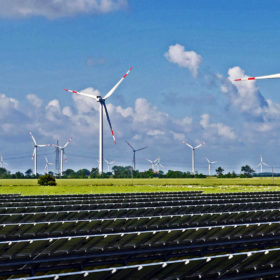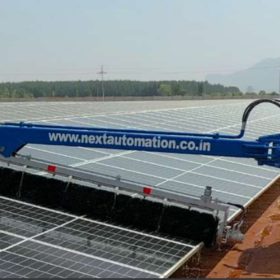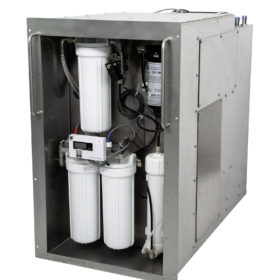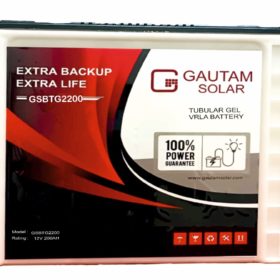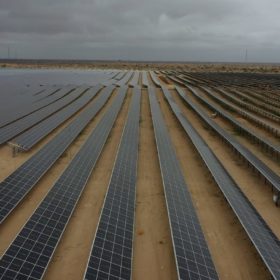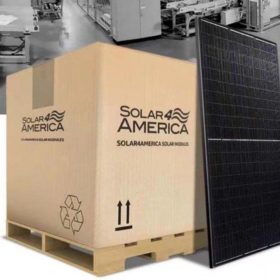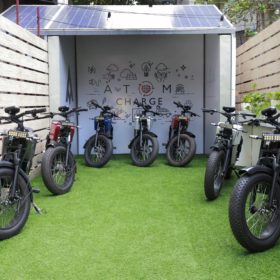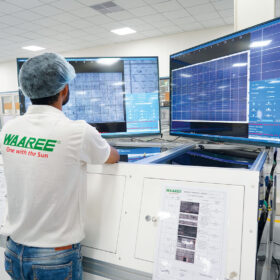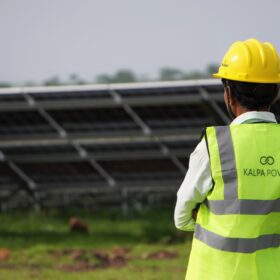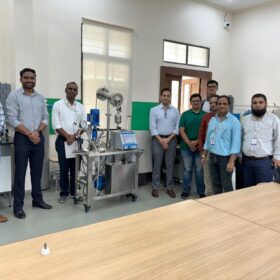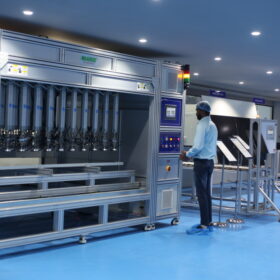Japan’s Mitsui to buy 49% in ReNew Power’s round-the-clock project
Japanese investor Mitsui has signed the agreement to raise a 49% stake in ReNew Power’s 1.3GW hybrid renewable energy project supplemented with up to 100MWh of battery storage. The project will supply 400MW of round-the-clock power to the Solar Energy Corporation of India (SECI) under a 25-year power purchase agreement.
Tractor-mounted, hydraulic panel cleaning arm for solar farms
Tamil Nadu based Next Automation has come up with a tractor-mounted hydraulically operated arm as a fast, accurate, cost-effective, and water-efficient cleaning solution for panels in solar farms.
Modular electrolyzer for residential, commercial applications
Germany’s Ostermeier H2ydrogen Solutions has developed an electrolyzer that works with tap water, with bottles to store hydrogen and a fuel cell or a Wankel engine to produce electricity. The system has a capacity ranging from 1kW to 100 kW, which corresponds to hydrogen production of 0.2-20 Nm3/h.
SMA unveils new inverter for residential, commercial PV
SMA is offering a new line of four inverters with power ratings of 12kW, 15kW, 20kW and 25kW, for use in rooftop PV systems up to 135kW in size. It claims the inverters provide grid-compliant power control of entire systems and enable over-dimensioning of PV arrays by up to 150%.
Gautam Solar releases gel battery solution for solar storage
India’s Gautam Solar says its gel batteries provide a safer, cost-effective, and long-lasting alternative for the energy storage space.
India’s utility-scale PV capacity hit 41.7GW in December
India installed 41.7GW of cumulative utility-scale solar capacity as of Dec. 31, 2021. It has another 44.6GW in the pipeline.
Rajasthan emerging as a solar hub
Rajasthan, which has already surpassed the 10GW milestone of installed PV capacity, has mopped up commitments for over INR 8 lakh crore of investment in the State’s energy sector alone.
SolarJuice Technology launches 450W, 550W modules for commercial PV
SolarJuice Technology manufactures its new 450W and 550W solar modules in a facility at a revamped Sunergy PV solar plant in Sacramento, California.
Solar the energy workhorse in latest gloomy IPCC verdict
Photovoltaics can wipe out 4.25 billion tons of carbon emissions every year this decade, according to the UN Intergovernmental Panel on Climate Change. Even so, the actions announced so far remain way short of what is needed, with capital flows to fossil fuels still greater than the cash directed toward combating climate change.
ATUM Charge deploys 250 solar-powered EV charging stations across India
These self-sustaining universal electric vehicle charging stations are powered by Visaka’s ATUM solar roof.
